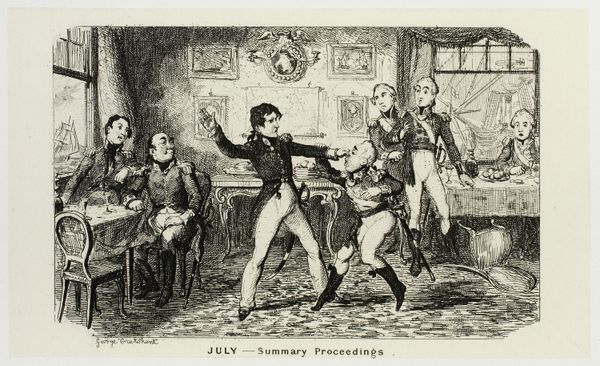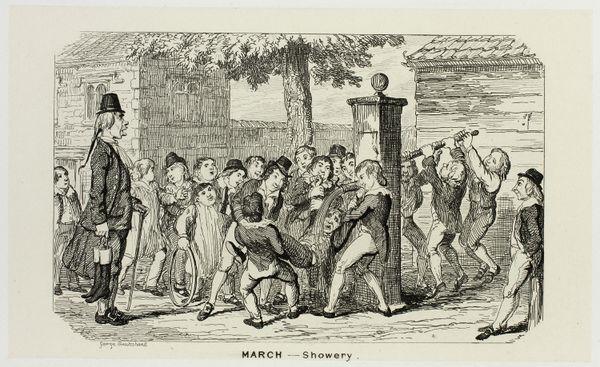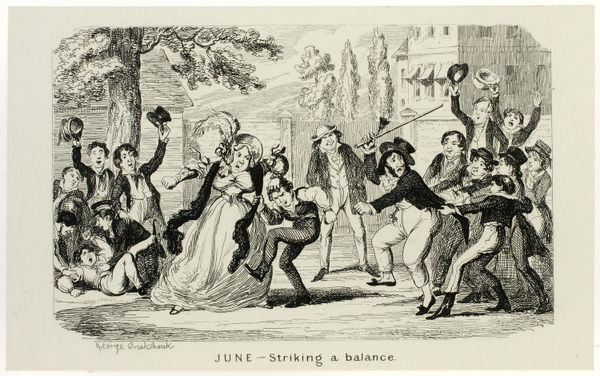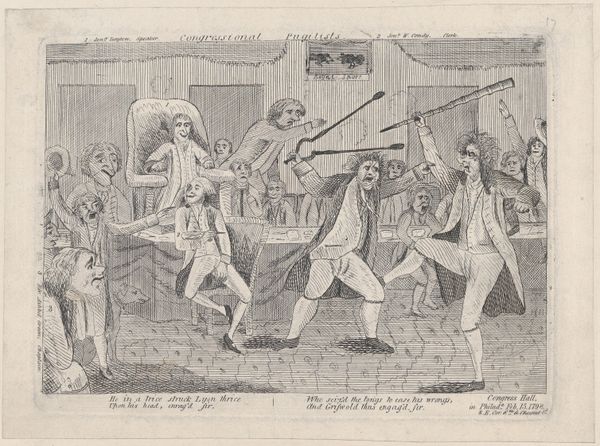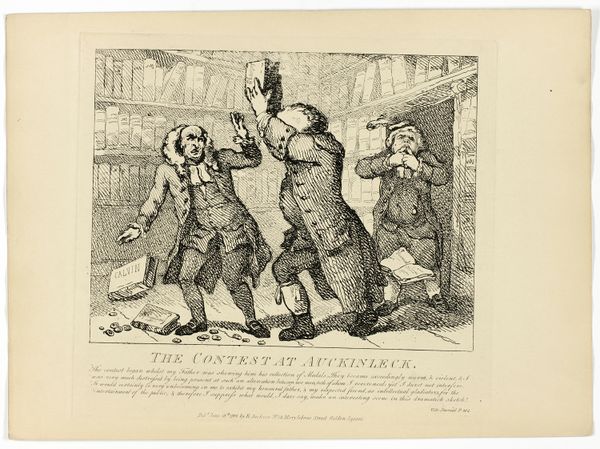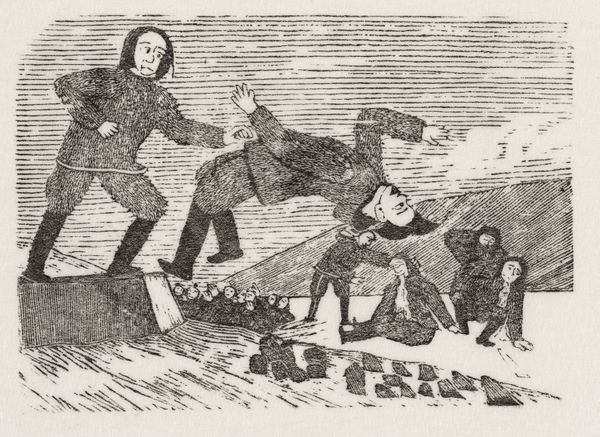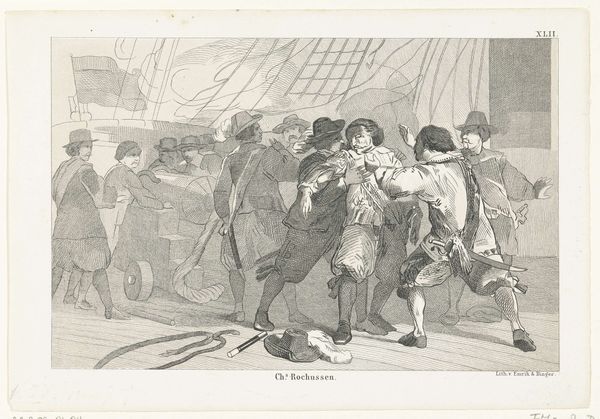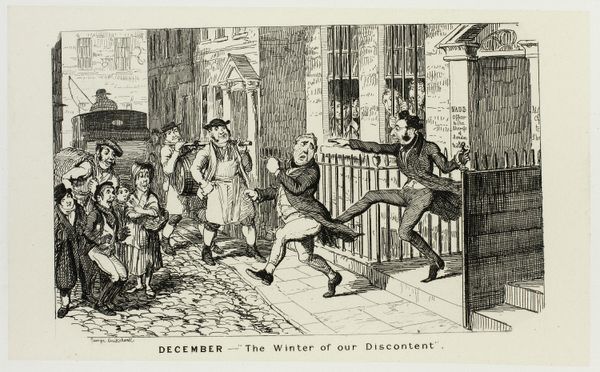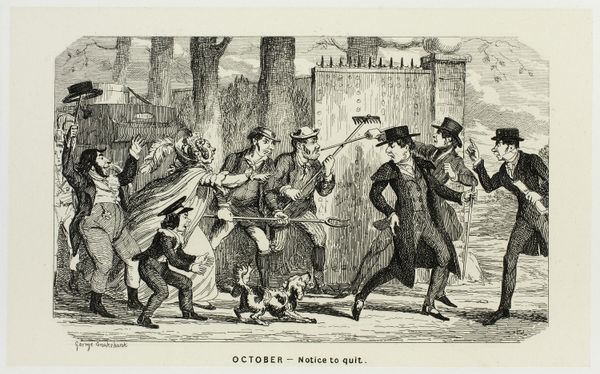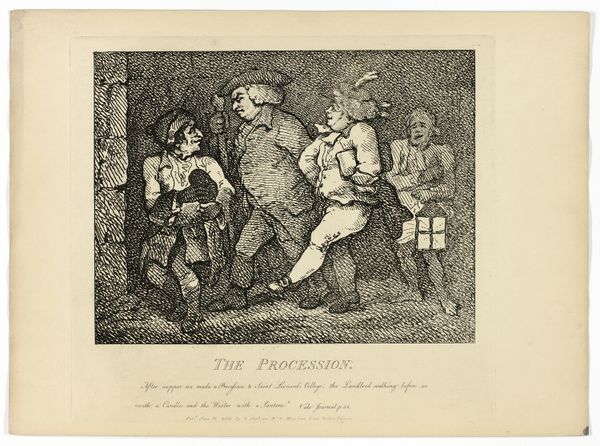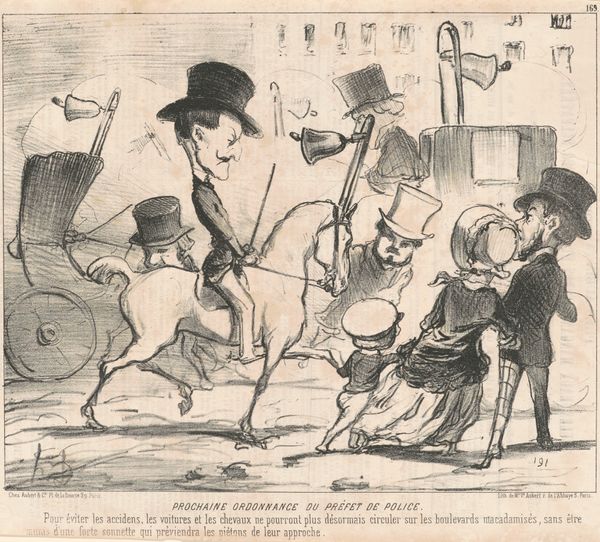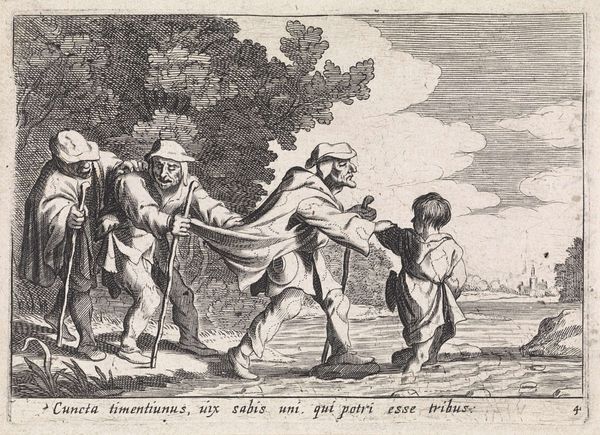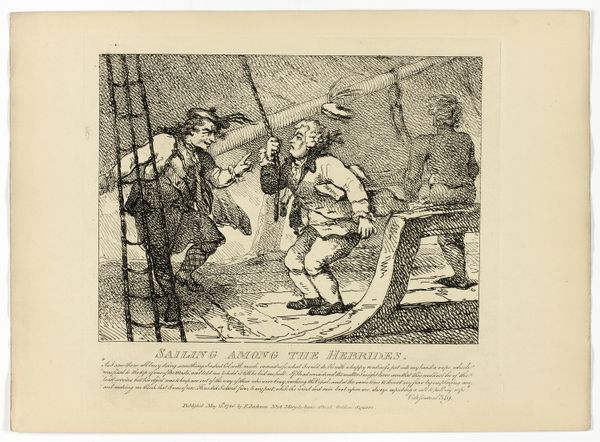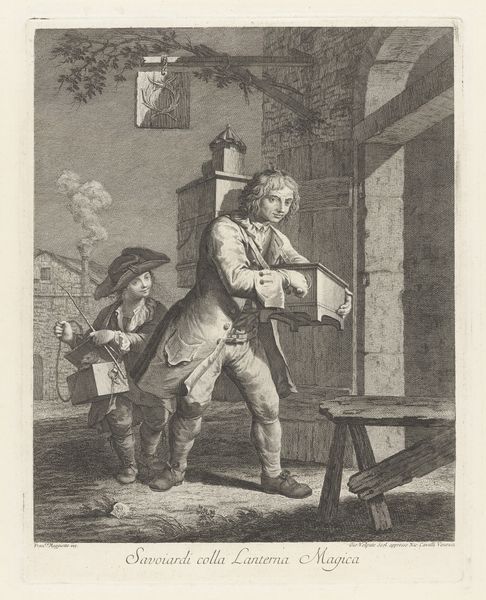
June - Marrowbones and Cleavers from George Cruikshank's Steel Etchings to The Comic Almanacks: 1835-1853 c. 1839 - 1880
0:00
0:00
drawing, print, etching, paper, pen
#
drawing
#
16_19th-century
#
narrative-art
# print
#
pen illustration
#
etching
#
caricature
#
paper
#
pen
#
genre-painting
Dimensions: 93 × 156 mm (primary support); 222 × 286 mm (secondary support)
Copyright: Public Domain
Curator: "June - Marrowbones and Cleavers," made by George Cruikshank sometime between 1839 and 1880. This print is one from a series of etchings for "The Comic Almanacks". Editor: It's got a lively chaos to it. All that frantic energy caught in pen and ink. There’s a great tension created by the angularity of the lines and the strong contrasts between light and shadow. Curator: Indeed. Cruikshank was a master of social satire, and this piece gives us insight into street life and popular culture during the period. The title refers to butchers' music made with bones and cleavers on St. Barnaby's Day. Editor: The composition is a whirlwind. My eye is drawn to the central figures, particularly the man wielding what looks like an axe, then flickers to the frightened onlookers. Curator: Exactly. These almanacks, popular in their time, provided entertainment and commentary for a broad audience, often with pointed satirical jabs at social norms. They helped disseminate ideas. Editor: I see. Looking at it purely formally, the deep blacks accent the violence of the action while those hurried pen strokes almost amplify the scene's agitation. It has the urgency of reportage, if such reportage were deeply stylized. Curator: The expressions are exaggerated and are typical of Cruikshank's style and the culture of caricature at the time, reflecting perhaps how the elites wanted to frame such lower class displays as unhinged and comical. Editor: Right! And look how he’s used the hatching to define forms, creating a surprising depth despite the flatness inherent in the medium. See how those white spaces function almost like miniature spotlights! It’s incredibly skillful. Curator: Think about who was consuming prints like this; prints intended for mass consumption helped foster a sense of shared identity and social commentary during the Victorian era. Editor: It certainly provides a lot to think about. This work has shown me how careful arrangement of light and dark creates something dynamic. Curator: It is important to reflect how such accessible art played an important role in how the British perceived their own culture and society in those days.
Comments
No comments
Be the first to comment and join the conversation on the ultimate creative platform.
